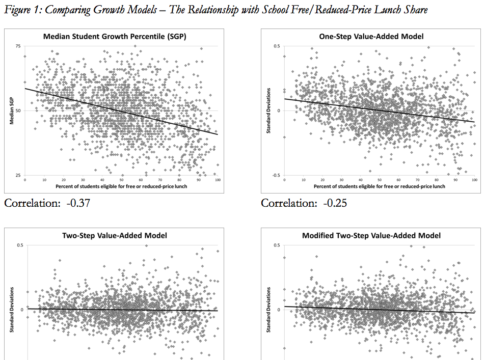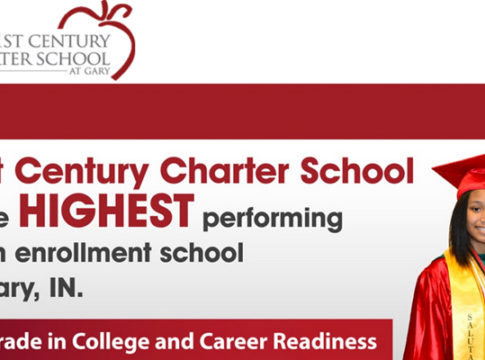There’s been much twittering, tweeting, debating, and general obsessing in education-land about this year’s presidential election and what difference it will make whether Barack Obama or Mitt Romney occupies the Oval Office after January 20, 2013.
In reality, however, while the outcome of this hard-fought contest matters greatly to the nation in many crucial realms, it doesn’t really make much difference for K-12 education. Nor do the parallel races to control Congress.
There are, to be sure, nontrivial differences between the candidates regarding future federal education policy, programs, regulations, and budget levels, and they have occasionally tried to underscore these during the campaign (not including Monday evening’s smarmy cries from both that “I love teachers!”). Yet even if those differences are substantial, it still won’t really matter much. Because federal policy, beloved though it is by those inside the Beltway and associated echo chambers, doesn’t really determine much about the conduct of our primary-secondary education system.
Even with his recently enlarged appetite for spending on education and attempts to call more of the shots, Uncle Sam kicks in only about ten percent of the money and has little to do with who teaches what to whom; who leads our schools and school systems; how much choice there is; what happens to good schools, dreadful schools, and middling schools; how teachers are trained; what gets crunched in times of tight budgets; what role technology will play; whether the social studies curriculum emphasizes content or feelings; whether math instruction is fuzzy or traditional; what foreign languages (if any) are offered and learned; and who gets hired or promoted or tenured or laid off.
All those crucial matters, and a thousand more, are chiefly determined at the state and local levels, not in Washington. Which isn’t to say they’re unaffected by what happens on November 6. They’re powerfully affected. But not by the presidential election. Or the congressional.
No, they’re mainly shaped by whom the voters choose for governor and legislator, mayor and county-council member, state superintendent and school-board member, and by how the electorate handles myriad ballot initiatives, levies and bond issues, constitutional amendments, and more. Thousands of separate outcomes of the 2012 election will determine the future course of American education. But mostly those are the races that nobody (except, sometimes, those who the races immediately affect) is paying much attention to.
I recently filled in my (absentee) ballot and found on it a bunch of races and issues about which I knew next to nothing. For example, I found contested elections for three seats on the Montgomery County (Maryland) Board of Education. That’s three of the Board’s seven adult members (there’s also a student member).
This is the kind of election that really matters for American education and it’s being repeated all over the place on November 6. Yet it’s getting almost no attention whatsoever—not even locally where I live. Indeed, in upscale, generally prosperous Montgomery County, it’s bloody hard to obtain enough information about the school-board candidates to make competent choices among them.
Two of the three contests involve incumbents; the third is an open seat. But whom to vote for? Prudently deciding takes effort—and time. If you have plenty of the latter, you can track down the candidates’ own websites. (Four of the six have such websites, with varying degrees of useful information. The other two do not.) Or you might examine their responses to questions posed to them by a small coalition of activist parents—but as of October 22 just two candidates had bothered to respond. Or you could take my shortcut and check out the teacher union’s recommendations—and then vote for the other guys! It’s a simple way to get just enough data to make choices without spending hours doing research, but it’s also a painful reminder that the local NEA affiliate is the one group that is truly informed, motivated, and engaged with elections like this—and its influence is amplified by everyone else’s ignorant apathy.
Let’s face it. All of these are lousy ways to make important decisions about key roles in education—and I wonder how many voters bother to investigate at all.
They likely know more about higher-profile contests, such as governors’ races. These, at least, get into the papers and you might even hear about them on the radio, perhaps see some campaign ads on the tube. But you’re not apt to encounter a great deal of well-informed debate or commentary on the candidates’ education views and intentions. Yet nobody matters more in education policy than states’ governors, and eleven such contests are being held this year. Five of those seats are open, the others occupied by incumbents seeking re-election. Two of the former are in bellwether “education states”: Indiana and North Carolina. Both places will also be electing, or re-electing, their state superintendents—as will Montana, North Dakota, and Washington. Imagine the education stakes in Indiana, say, without Mitch Daniels or—should he lose his hard-fought contest to remain in office—Tony Bennett as state supe.
Hundreds of other influential-for-education positions are up for grabs in state legislatures, state boards, and more.
Then there are the ballot issues, of which Wall Street Journal reporter Stephanie Banchero found “a slew” this year at state and local levels. Most involve taxes (and related revenue raisers such as casinos) and spending. Prominent examples today include Denver and Cleveland, as well as rival budget measures in California. Yes, these will get argued over in the community or state that’s affected, but more as a debate over taxation (or the morality of gambling) than the education policies and programs that are on the line.
Other ballot initiatives speak directly to policy issues, sometimes the hot-button kind. Idaho, for instance, has a measure on the November ballot to undo the state’s new shackles on collective bargaining by teachers, while Washington State voters are asked whether (finally) to permit the creation of charter schools, and Georgians must decide whether to (re)establish an independent statewide authorizer so that chartering decisions are not entirely within the control of local school districts.
Who is paying attention to the merits of such measures? Directly affected adult interest groups are on the case, for sure, but is anyone attending to which outcomes would be better for the kids?
If you’re lucky, your state has a PIE-Network-style “education-advocacy organization” that’s engaged on behalf of the public interest—at least as perceived by reformers. Such outfits are spreading, but none was around to help me decide whom to vote for in Montgomery County. Perhaps DFER, StudentsFirst, or Stand for Children has endorsed candidates in your local or state races. Check it out. But don’t even dare to dream that these state and local ballot issues will make their way into the national media, prominent education blogs, or Washington powwows. There you’d barely know that any of this is happening, much less be reminded of how much more it matters to the future of our K-12 system than the choice between Messrs. Obama and Romney.
-Chester E. Finn, Jr.
This blog entry first appeared on the Fordham Institute’s Flypaper blog.




